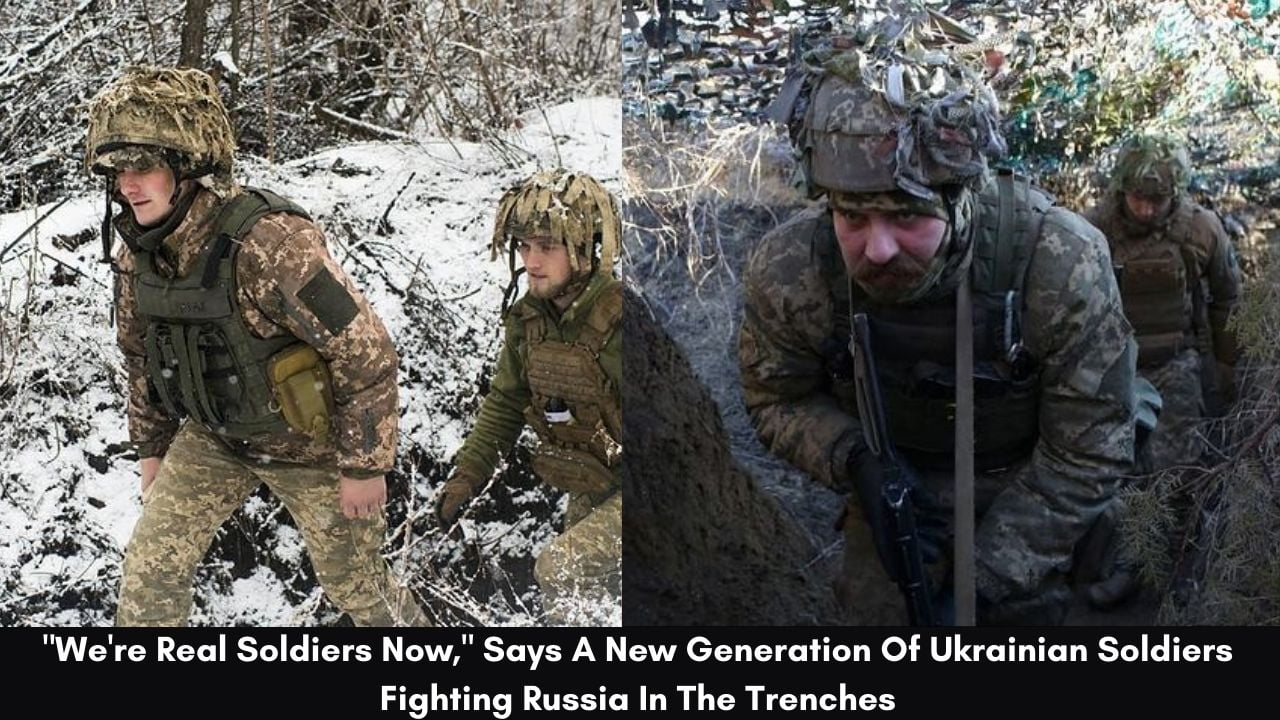NIU-YORK, Ukraine (Ukraine) — It was soldier Ihor Tychyna’s turn to stand watch in this little village in eastern Ukraine, where people on the front lines of Russia’s eight-year-long war never get a good night’s sleep.
On Dec. 27, it was shortly after 2 a.m., and light snow was falling. When he reached a shallower section of the channel, the lanky 20-year-old of the 95th Air Assault Brigade was striding through the neck-deep tangle of trenches.
With the muck squishing beneath his feet, he very probably didn’t hear the gentle chirp of a sniper’s bullet as it passed through the left side of his head barely 1 inch below his helmet, fired from a bluff 800 metres away.
“It was a Mission Impossible kind of shot,” Denis Ivashchenko, a 21-year-old officer to whom Tychyna reported, told me this week when I visited his brigade’s positions. “It was dark and snowing, and he was moving. The sniper had to be a professional.”
Ivashchenko discovered Tychyna slumped over a few moments later. Blood was pooling beneath him in the fresh snow due to a hole in his skull. Tychyna was taken to a neighbouring hospital but died on January 1, 2022, becoming the first Ukrainian soldier to do so. He’s now one of the 14,000 persons murdered in the battle since it began in the spring of 2014.
Andriy, a 21-year-old soldier with a well trimmed beard, was excavating with a pickax and shovel at the place where Tychyna was shot three weeks later.
“It should be deep,” Ivashchenko said, monitoring Andriy’s work.
Andriy slung dirt over his shoulder after shovelling it. His helmet was about a foot below ground level at this point.
Since an uneasy stalemate took hold in January 2015, following nearly a year of all-out fighting, the battle in eastern Ukraine, an area known locally as the Donbas, has been like this. It’s exhausting, bloody, and pointless. For years, no one has gone on the offence here. The majority of recent battlefield casualties have been caused by sniper fire and landmines. Every month, a small number of soldiers die. However, danger lies around every trench bend. Soldiers in this area are well aware of the importance of maintaining vigilance at all times.
However, after eight years of this, they occasionally do.
Read More-
It is Ukraine’s eternal conflict, in which generations have fought and grown up. Fathers who first took up weapons in 2014 now have sons like Andriy, Denis, and Ihor, who were teenagers eight years ago when Moscow occupied Crimea and invaded the Donbas. (Andriy, who hails from a military family, said his father fought in the 2015 battle of Debaltseve, in which the Ukrainian military was besieged and hammered by heavy artillery, turning the war in Russia’s favour.)
Hundreds of Ukrainian soldiers were killed in one of Kyiv’s worst single-battle losses. Andriy’s father was fortunate to survive.) These young men are now Ukraine’s first line of defence on the front lines.
I spent a week with Ukraine’s military in three important locations along the 250-mile front line – Niu-York, Avdiivka, and Opytne — to learn about what they’ve observed and how they’re planning an attack. I discovered that fighting in the Donbas has been more regular and intense than both sides have stated, with daily skirmishes including small arms, sniper duels, and provocations involving small mortar systems. Heavy artillery has returned to Russia-backed positions, according to soldiers in three different positions. New trenches are being dug in several areas.
As the Kremlin prepares for what appears to be a new invasion of Ukraine, the US and its NATO partners warn that they may soon face the full power of the Russian military and renewed warfare on a scale greater than previously seen.
“My guess is he will move in, he has to do something,” President Joe Biden said about Russian President Vladimir Putin on Wednesday. A full-scale invasion of Ukraine would be “the most consequential thing that’s happened in the world in terms of war and peace since World War II,” Biden added, with the risk of it spreading beyond the Ukrainian borders where it “could get out of hand.”
For weeks, Russia has been massing roughly 127,000 troops and tonnes of military equipment around Ukraine’s border, ratcheted up its rhetoric and disinformation operations against Kyiv, and even targeted government buildings with hacks, according to a Ukrainian intelligence officer. Satellite images and social media posts have given us near-real-time updates on the situation.
“Ukraine does not want a war, but Ukraine must always be ready for it,” President Volodymyr Zelensky said Wednesday in a televised address during which he urged Ukrainians to remain calm. “We are not afraid because we protect our land. We will not give up because there is nowhere to run.
Many soldiers said that Russia’s latest military moves make them nervous; there’s palpable anxiety mounting on the front. But Ukraine’s troops have been preparing for this moment for several years.
“We’re not scared. We’ve had time to grow stronger. We’re real soldiers now,” 24-year-old Platoon Commander Valentin Trusov told me in the village of Opytne, where just about 28 residents remain, living without electricity and heating.
I reached him from a desolate road where it’s necessary to race at high speed in order to avoid fire. In peacetime, this drive would be an idyllic one, with golden fields of sunflowers and tall grass lining the highway. Now soldiers here refer to it as a “road of life” as it offers an escape from danger. But sometimes it’s also the “road of death.” Two troops were killed by an anti-armor missile on it last summer while on a supply run.
Read More-
Harley Quinn Season 3 Is On It’s Way According To The Reports, Here What You Need To Know!




